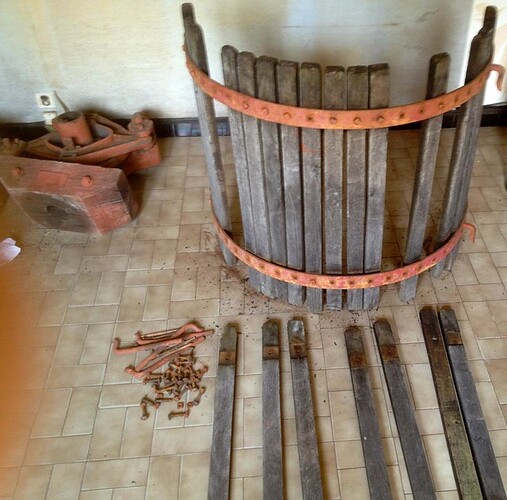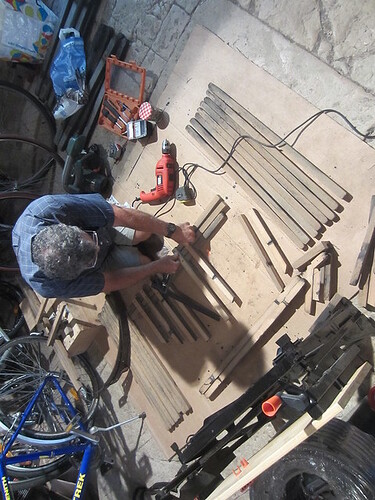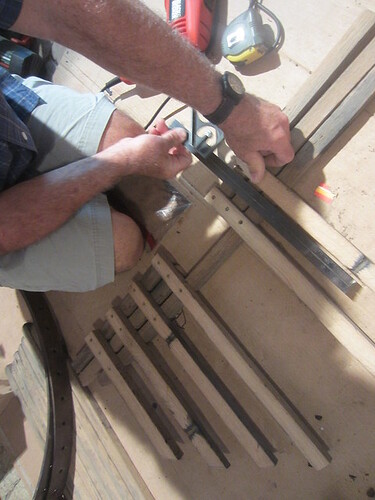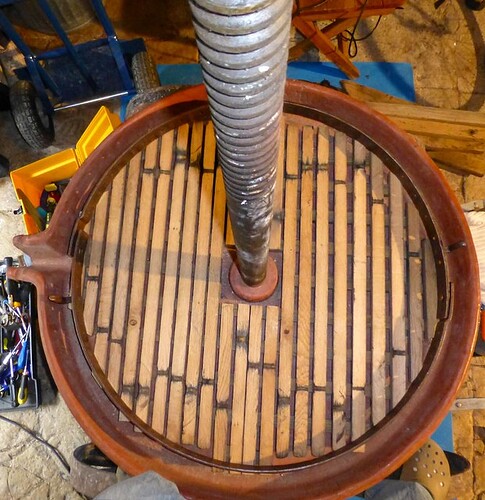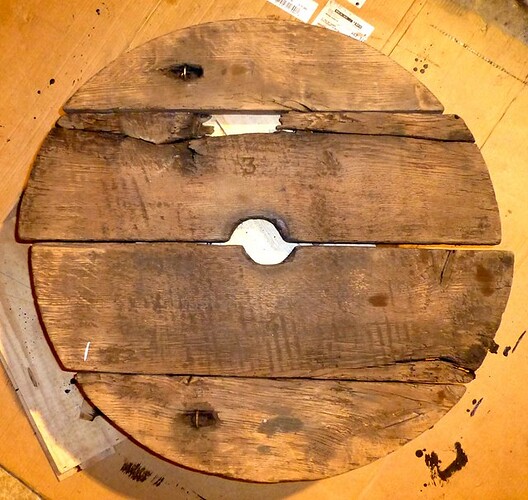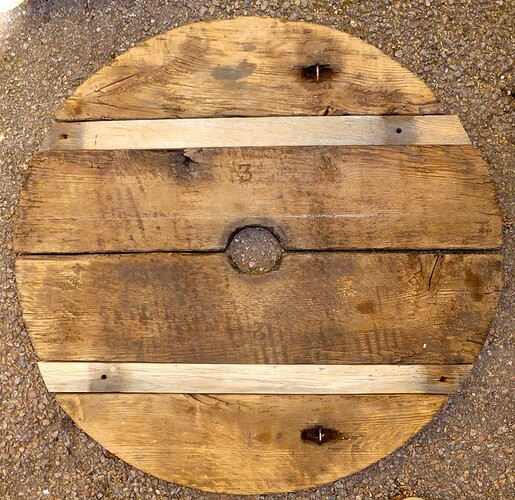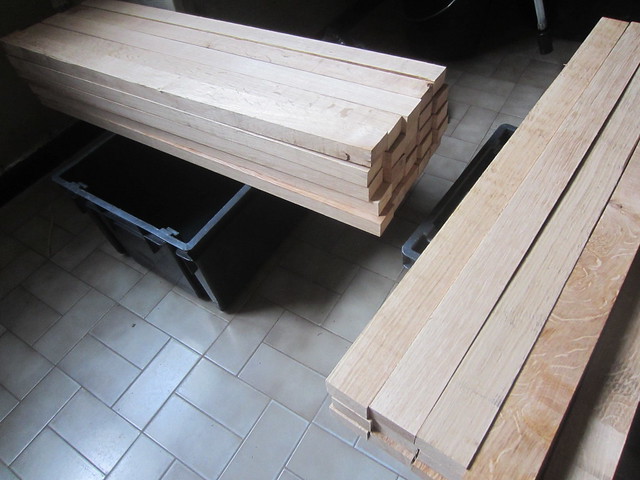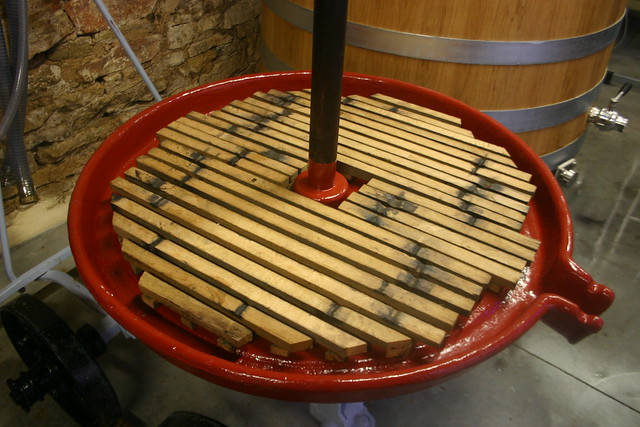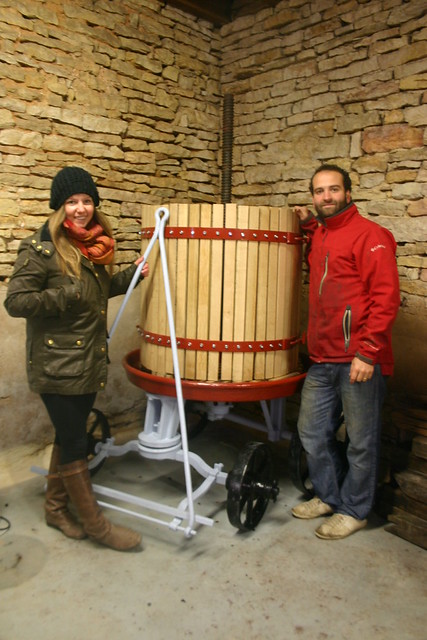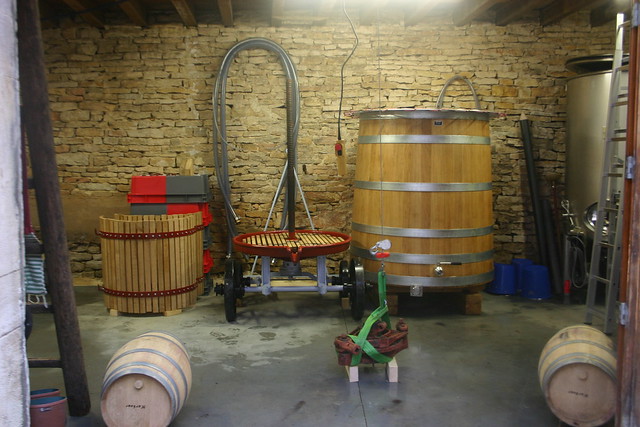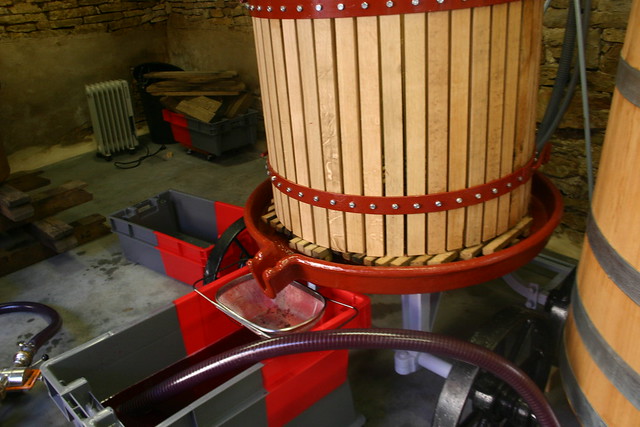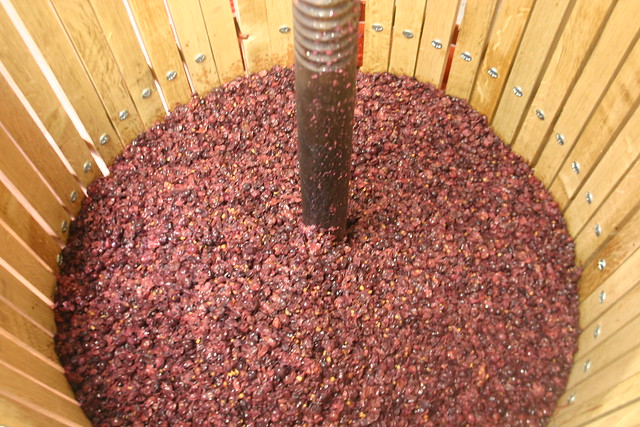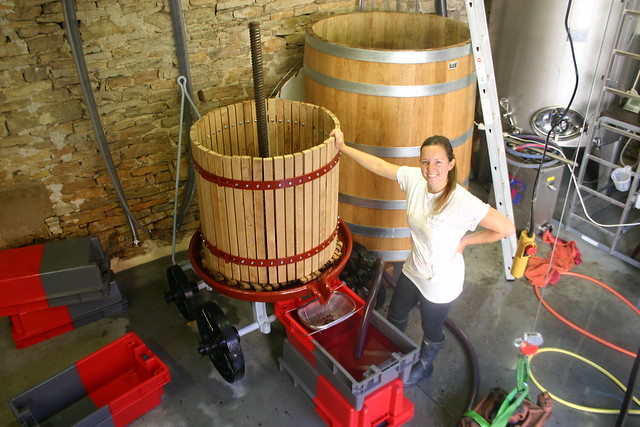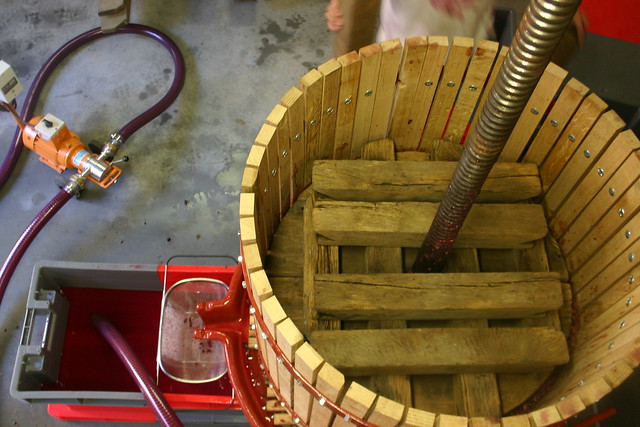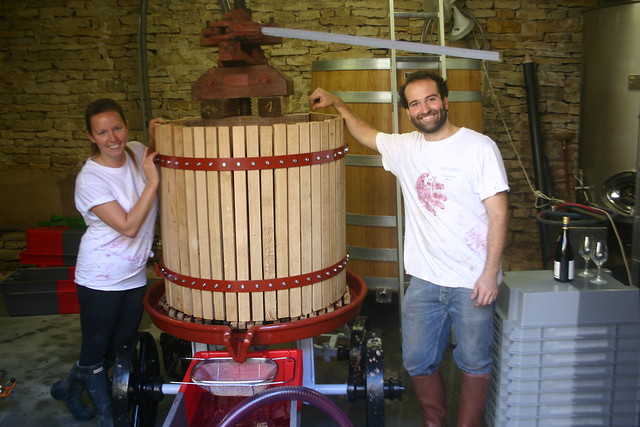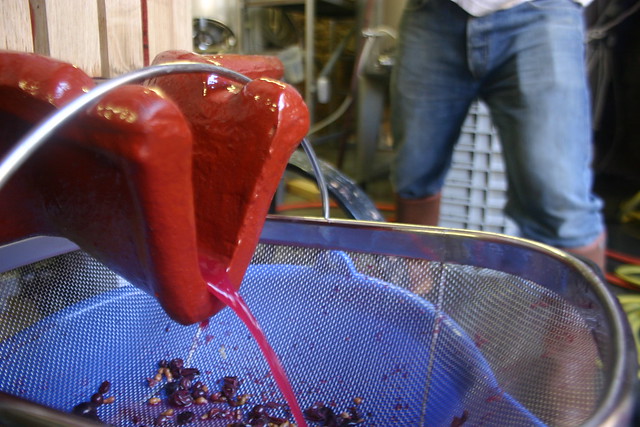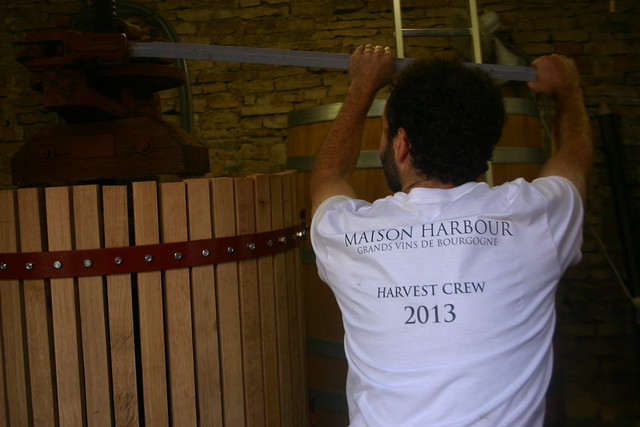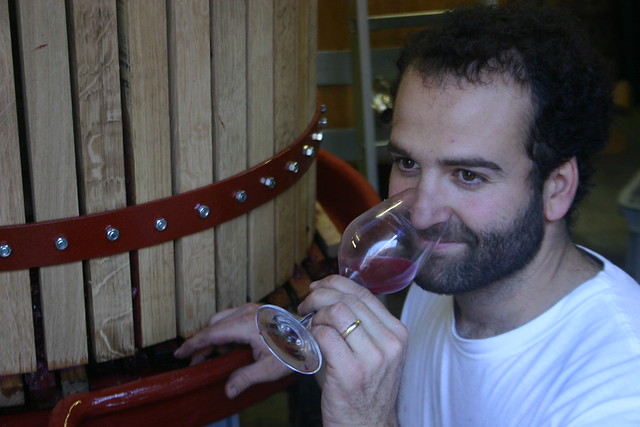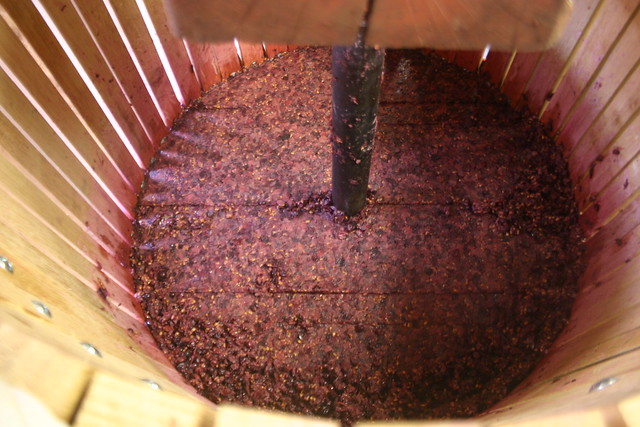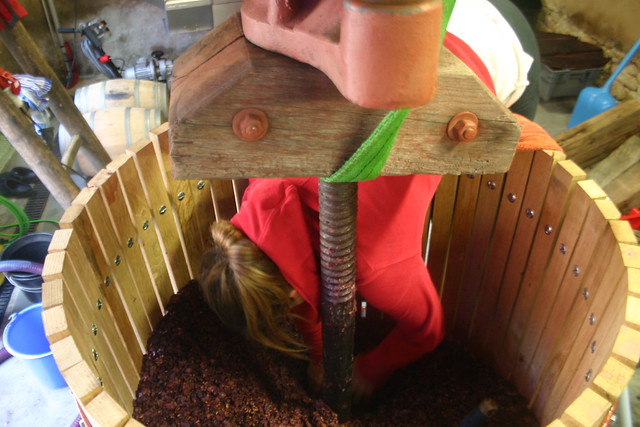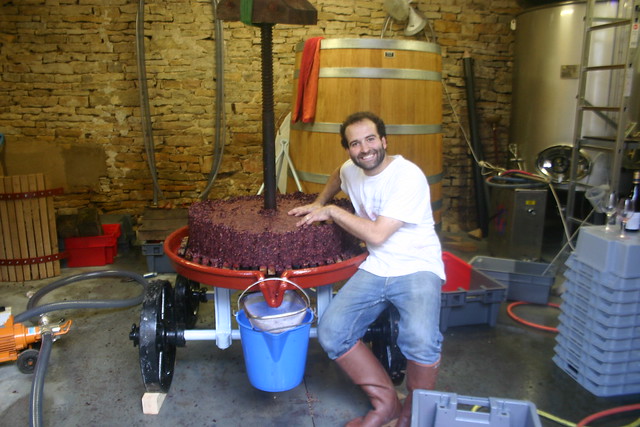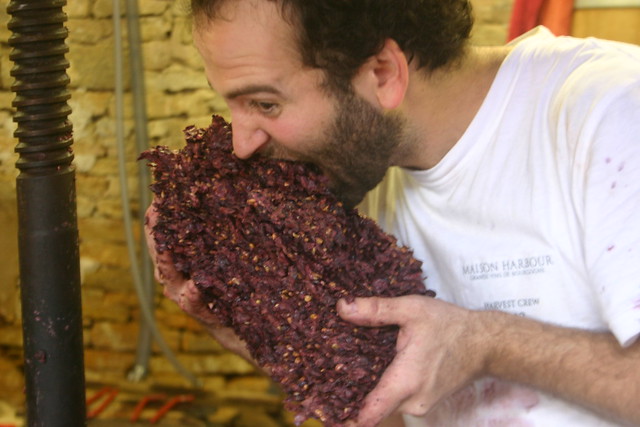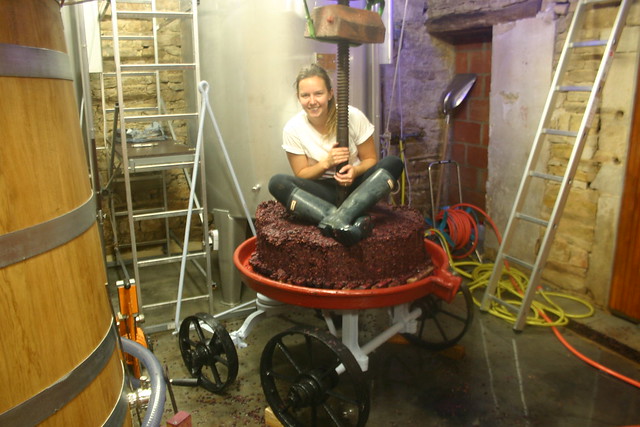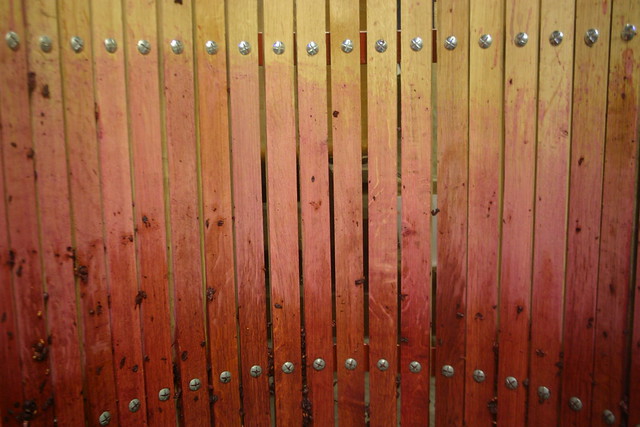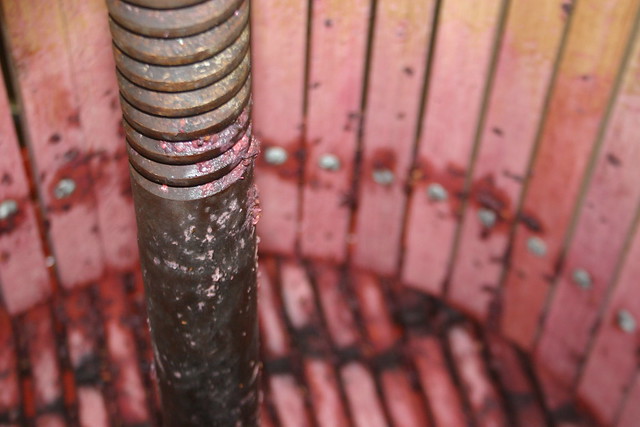Now that the winery floor has a beautiful floor and drain, tested today by my father, Gary, as he spent the afternoon power washing the walls, ceilings and floors, we have started another fun project. Colleen and I found a 19th century vertical wine press here in Burgundy and now Gary is helping us to restore it to its former glory. Here are a few pictures of the press on arrival at Maison Harbour.
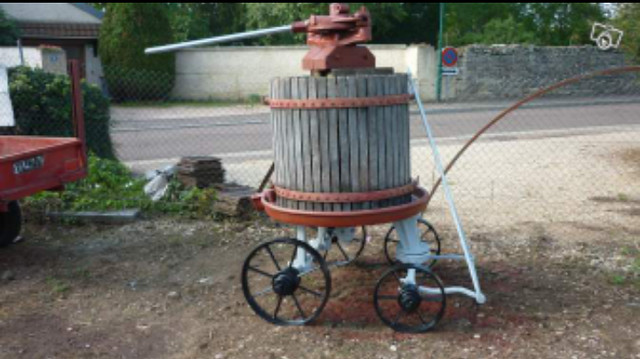
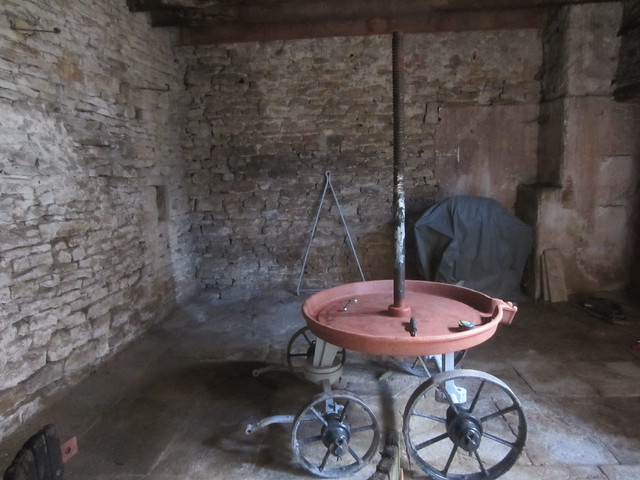
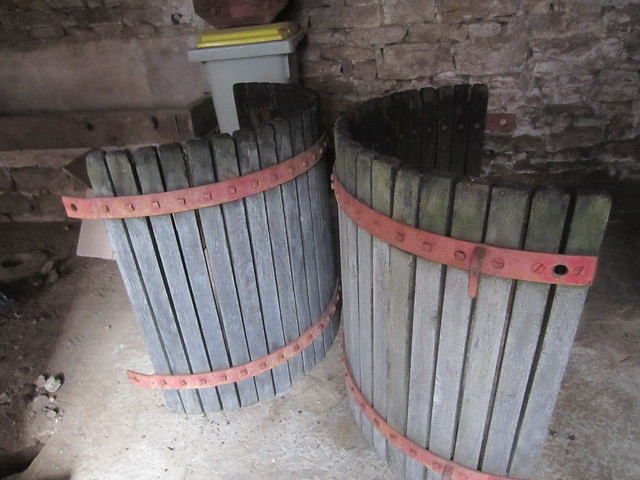
The press is a basket press made by Demoisy Fils made in Beaune. The trough is made of cast iron. The cage is made of oak and has a diameter of 80 cm and a height of 80 cm. I figure this gives it a volume around 4 hl. Which for world wine standards is tiny, but for our small winery it will be perfect. Because of it’s small size both Colleen and I can move and operate the press on our own. The pressing mechanism is ratcheting (pressoirs à cliquets) which is also nice because there is nothing to malfunction. It just needs a lot of good old elbow grease to work. We also like that most people here refer to this type of press as a pressoir américain!
We started the restoration by dismantling the press. The ratchet was removed from the screw and the oak staves were removed from the iron bands. This was not easy as most of the century old screws and bolts had fused together and would just spin in place through the oak staves. It was at this point we knew we had to replace the staves.
Now come the fun part. How do you replace oak staves? We are lucky enough to have good friends at the barrel marker, Meyrieux. They are located just a few minutes west from Nuits-Saint-George. We wrote up a nice post about visiting them and the art of making Burgundy barrels you can check it out, here. After a quick visit to the tonnellerie, we had a source for new oak staves. They should be ready to be picked up next week!
The other parts of the basket, the bottom and the top, not sure what their names are… also needed some work. After careful consideration we decided to make use of the best of the old oak staves to build a new base and refurbish the top. We got to work rough sanding them down and cutting them to size.
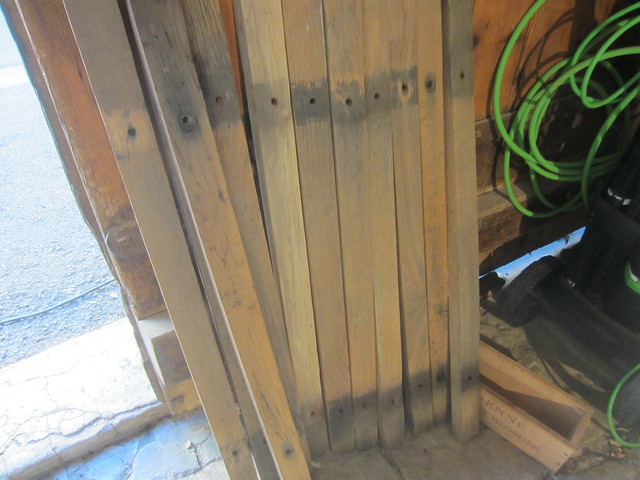
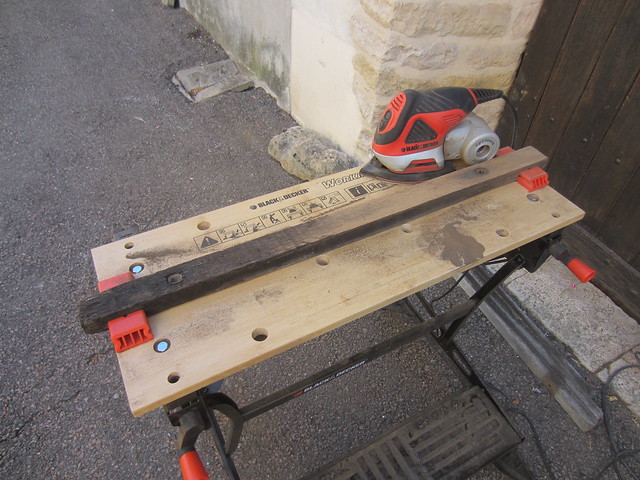
The work of putting these pieces together in a perfectly spaced base was taken on by Gary, who make quick work of it.
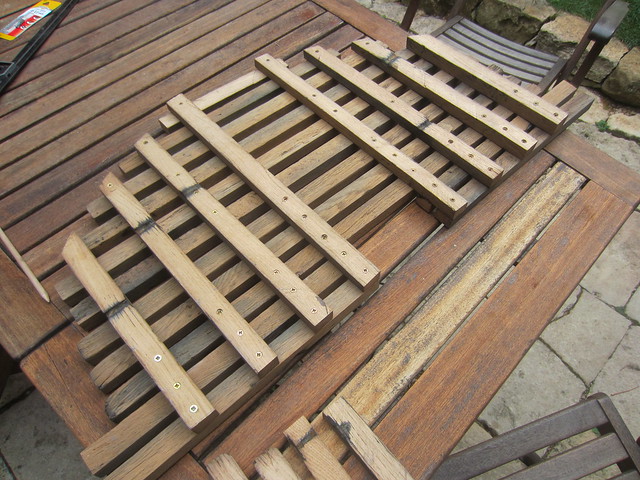
Next up was the top.
Before,
After,
While we wait now for the new oak staves we have started to think about the trough. The idea is to brush it down to the iron and repaint it with food-grade paint. Then last but not least the chariot needs a new coat of paint. We are thinking about sticking with the original colors, red, black and blue/grey. What do you think?
In terms of functionality, anyone have any advice about getting the ratchet working well? Should we grease the screw? What type of grease should we use?
